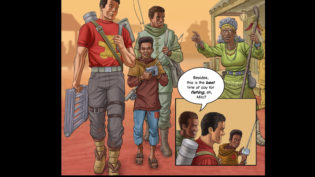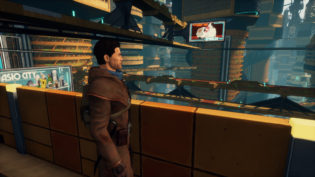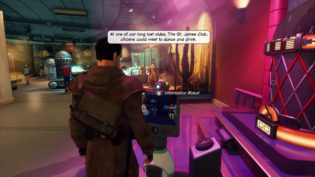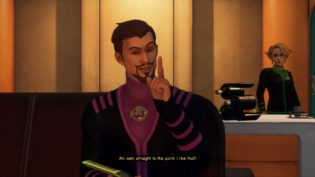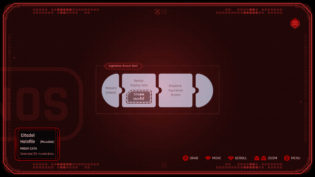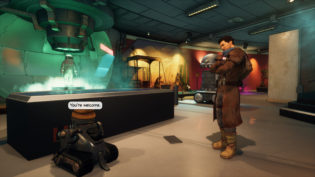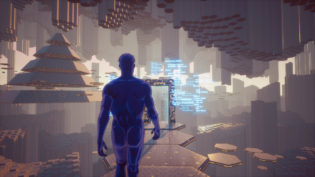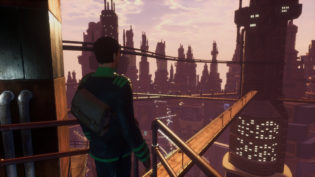Revolution Software might be best known for the Broken Sword series, with the first entry still being considered among the best adventure games of all time. However, their previous title, Beneath a Steel Sky, is liked as much if not more among some. It was their second Virtual Theatre engine game that had lots of innovative concepts not seen in other adventure games at the time, “grounding” every character in the game and giving all of them their own schedules. It was also a relatively short game, yet packed full of memorable scenes, characters and moments and it’s no surprise people wanted to see more of this game world. 16 years since the release of the original and 7 years since said original has been available for free download, Revolution released Beyond a Steel Sky – a full on sequel, exploring the aftermath of the events of the first game. And while it’s not as revolutionary (pardon the pun) as the original game may have been, it’s a really fun modern take on the genre.
Having played the original game definitely helps, but thankfully, you can enjoy this game without prior knowledge and it will explain (or remind) you of the world Steel Sky takes place in. It’s a dystopian future set in Australia, where some people live in several technologically advanced cities and some live a simpler life in the Gap (current Outback). Robert Foster, the main character of both games, has lived in the Gap for 10 years since the events of the previous game, however a sudden incident leads him back to the setting of the first game – Union City.
While the original game was a screen-by-screen point and click adventure, Beyond works as you would expect from a modern 3D adventure title with direct character controls. It feels really good, both with keyboard and mouse and a controller (apart from several menus where the controller has issues), and reminded me about just how far we went since the awkward earlier attempts at this type of controls back in Dreamfall in 2006. This being an adventure game, lots of gameplay is about solving problems, which, luckily just like with the first game, are mostly problems and not abstract puzzles. Though you do still get moments where you can formulate a plan only after randomly trying out an interactable object because it’s interactable, not because you knew what to do with it.
A big part of problem solving is also delegated to the hacking tool that you get early in the game. It’s a fun simple concept, which basically allows you to swap instructions between devices you’re connected to with the hacking tool. It’s usually very limited in what can be swapped, so you don’t get overwhelmed, but developers left enough fun optional interactions that won’t solve problems, but will get a reaction from the game. They mostly put those during parts where you will be experimenting when trying to find a solution so you don’t get bored when, for example, swapping the voice tone of an announcement robot and learning that yes, they did in fact voice over all of the variations.
Just like with Beneath, the game isn’t trying to wow you with constantly new locations and characters and rather tries to put the things you’re already familiar with in a new context with each new story twist. So you will be revisiting locations and learning more about different characters. Which will differ from playthrough to playthrough depending on how you play, mostly in minor ways, but there are a few moments that will change the fate of some characters. And there’s even at least one moment where you can “die”, though it’s not as much of a risk as it was even in Beneath and relying completely on auto-saves is fine for the most part (you can manually save at almost any point too, however).
Despite so often being comparable to Beneath, Beyond is smart enough to be its own thing and not rely on the original for the most part, as far as a direct sequel can. That said, there are moments that feel like pure indulgence in nostalgia, or character returns that feel unnecessary and a bit gimmicky. Plus, the game has what has thankfully became a rarity in modern games – clear references, sometimes outright scene quotations, of movies or books. It’s been a very popular thing to do in the 90s adventure titles, so I guess it’s also nostalgia. But as someone who has never appreciated those, especially in games that have so much of their own identity, this felt jarring. As did the somewhat abrupt and lacking ending segment of the game. It wasn’t bad, unless you really hate story twists that you can call from hours before they are revealed, but it did feel a bit too simplistic and also handled rather poorly in terms of gameplay.
All that said, however, Beyond a Steel Sky is a wonderful adventure game for a modern age. It’s one of the most enjoyable takes on the genre as of late, where you still get both the adventure feel and the problem solving aspect of the classics, without weighing too far into one or the other. And it’s a really good example of how the classic point and click adventure gameplay can be transferred into 3D with direct controls of the character. If you’ve never played the original game, I would suggest checking that out first, but if you don’t feel like it, playing Beyond a Steel Sky would still be a very enjoyable experience.


